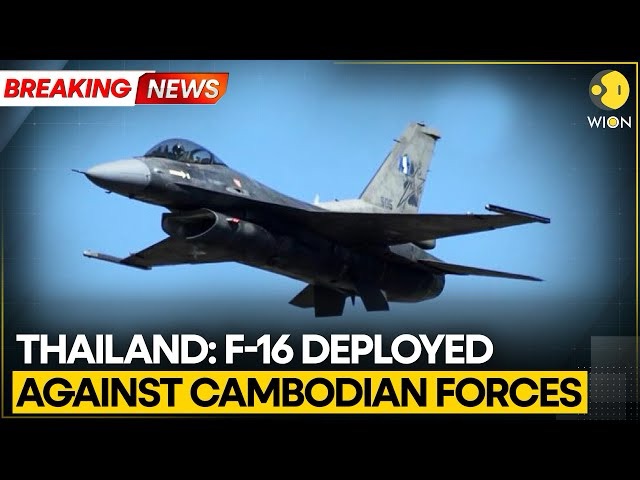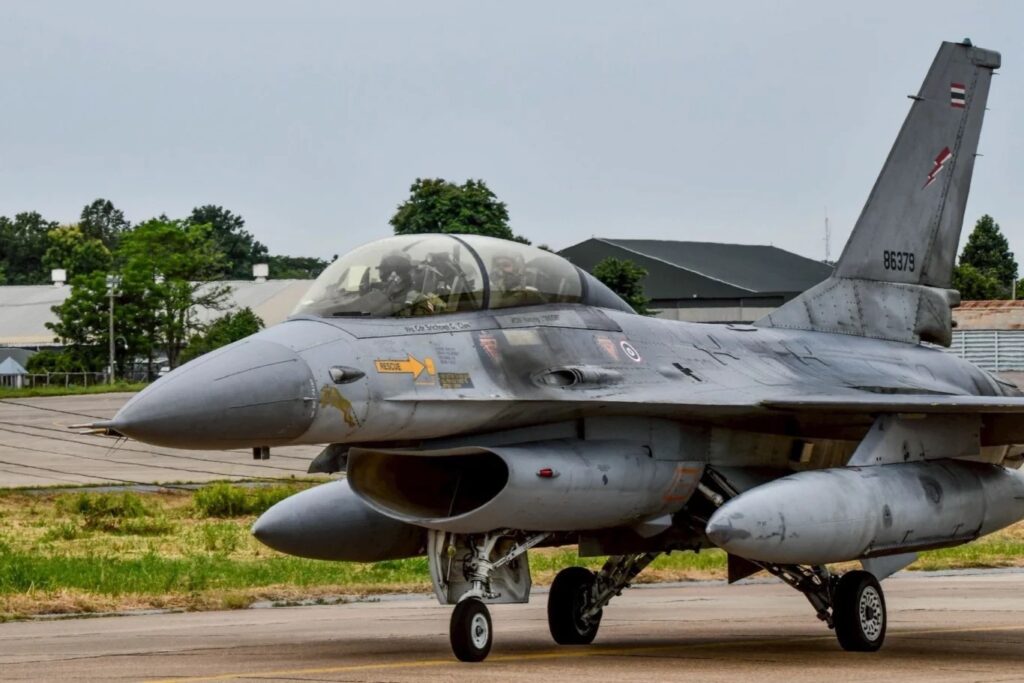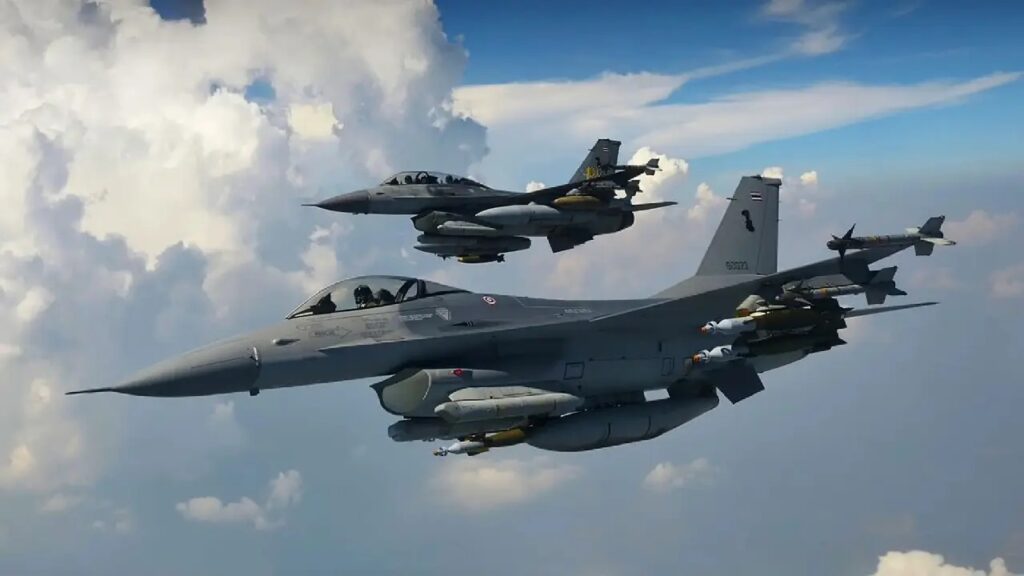
On July 24, 2025, a border clash between Thailand and Cambodia abruptly shifted the regional security dynamic, highlighting the persistent fragility of certain demarcation lines inherited from the last century. The attack on a Thai forward outpost in Phanom Dong Rak District, near the Ta Muen Thom temple, prompted an immediate response from Bangkok. Within hours, several F-16s from the Royal Thai Air Force (RTAF) took off from Ubon Ratchathani Province to strike designated military targets inside Cambodian territory.

The Royal Thai Air Force currently operates a fleet of F-16A/B Fighting Falcons, primarily derived from the Block 15 OCU (Picture source: RTAF)
The RTAF’s response focused on precision strikes by F-16s against command posts and logistical infrastructure of the Cambodian military. Images released by Bangkok reportedly show the use of guided munitions on military objectives, particularly in Preah Vihear Province. Cambodian authorities acknowledged that strikes occurred near sensitive areas, while condemning the action as disproportionate.
The Royal Thai Air Force currently operates a fleet of F-16A/B Fighting Falcons, primarily derived from the Block 15 OCU (Operational Capability Upgrade), with some units belonging to the ADF (Air Defense Fighter) subtype. These single-engine aircraft, single-seat (F-16A) or two-seat (F-16B), combine lightweight design, maneuverability, and multirole versatility. Powered by a Pratt & Whitney F100-PW-200 turbofan engine producing 23,830 pounds of thrust with afterburner, they can reach speeds of Mach 2 and carry out combat missions within a radius of 550 to 800 km. Equipped with fly-by-wire control systems, an optimized aerodynamic profile, and a frameless canopy for panoramic visibility, these F-16s provide Thailand with flexible interception and strike capability across its airspace.
In terms of armament, the Thai F-16A/Bs carry up to six external hardpoints, configured for air-to-air missiles (AIM-9 Sidewinder, AIM-120 AMRAAM), air-to-ground missiles (AGM-65 Maverick), laser-guided bombs (GBU-12 Paveway II), or unguided MK-80 bombs. The internal M61 Vulcan 20 mm rotary cannon supports close-range engagements. Their avionics include the AN/APG-66 pulse-Doppler radar, inertial navigation system (INS), head-up display (HUD), and multifunction displays (MFDs). ADF variants feature enhanced IFF systems, upgraded radios, and a side-mounted searchlight for night identification. Self-protection is ensured by chaff, flares, and a radar warning receiver (RWR), allowing operations in semi-contested environments.

The balance of power in this sector is tilted in Thailand’s favor. Its air force is structured around a modern combat fleet, comprising 50 F-16A/Bs, some donated by Singapore, 11 Swedish-designed Gripens (C/D variants) integrated into an Erieye command-and-control architecture, and about 30 F-5E/F Tiger IIs still in use for specific missions. The fleet is supported by transport, reconnaissance, and electronic warfare assets, along with advanced radar coverage. It benefits from a robust network of air bases and proven interoperability with U.S. forces, particularly through Cobra Gold exercises.
The RTAF today is capable of executing interdiction, deep strike, air superiority, and ISR missions with a high degree of operational autonomy. The July 24 engagement confirmed its ability to mobilize and respond within hours, achieving localized and targeted tactical effects.

In comparison, the Royal Cambodian Air Force remains limited in both capacity and capability. It operates no fighter aircraft and lacks offensive aviation platforms. Its inventory primarily consists of utility helicopters such as the Mi-8/17 and Z-9, supplemented by a few light transport aircraft. Cambodia has no airborne radar or integrated air defense network. It is thus reliant on ground forces for any reaction or deterrence mission, with virtually no ability to challenge airspace control.
This imbalance is not limited to airpower. The Thai military fields significantly greater human and material resources, with approximately 360,000 active personnel, a stock of 400 tanks, 1,200 armored vehicles, and over 2,600 artillery systems. Joint operations with the navy and naval aviation further underscore the gap, as Thailand’s maritime forces significantly outmatch Cambodia’s modest navy, which includes around a dozen coastal patrol boats and a single landing vessel.
In the background, the U.S.–China rivalry adds a layer of strategic ambiguity. While Thailand remains a U.S. strategic partner, it has also deepened military ties with China. Cambodia, for its part, depends heavily on Chinese assistance for military modernization. Beijing has called for restraint, declaring itself “impartial” while reaffirming its commitment to a peaceful resolution.
As both capitals assert their respective positions, the current strategic balance leaves little doubt regarding Thailand’s operational advantage, particularly in the air domain. The question remains whether this superiority will serve as a deterrent stabilizer or signal the onset of renewed instability in a historically contested border zone.